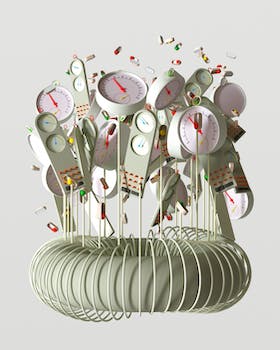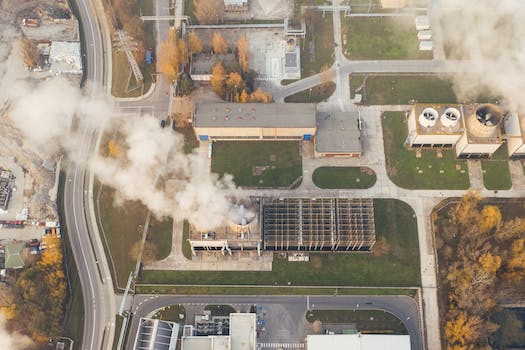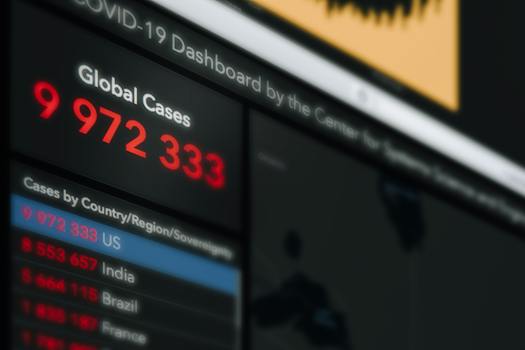

-
Table of Contents
Unveiling the Future: Beyond the Pixel Curtain
Introduction
The Future of Visualization: A Peek Beyond the Pixel Curtain
Visualization has come a long way since its inception, transforming the way we perceive and understand information. From static charts and graphs to interactive and immersive experiences, visualization has become an integral part of various fields, including science, technology, education, and entertainment. However, the future of visualization holds even more exciting possibilities. In this article, we will explore the advancements and emerging trends that are shaping the future of visualization, offering a glimpse beyond the pixel curtain.
The Impact of Augmented Reality on Visualization
The Impact of Augmented Reality on Visualization
In recent years, augmented reality (AR) has emerged as a groundbreaking technology that has the potential to revolutionize the way we visualize information. By seamlessly blending virtual elements with the real world, AR has the power to enhance our understanding of complex data and provide immersive experiences like never before. This article explores the impact of augmented reality on visualization and delves into the possibilities it holds for the future.
One of the key advantages of augmented reality in visualization is its ability to bring data to life. Traditional methods of data visualization, such as charts and graphs, can often be static and two-dimensional. However, with AR, data can be transformed into interactive and dynamic visualizations that can be explored from different angles and perspectives. This not only makes the data more engaging but also allows for a deeper understanding of complex concepts.
Furthermore, augmented reality has the potential to bridge the gap between the digital and physical worlds. By overlaying virtual elements onto the real world, AR can provide context and additional information that may not be immediately apparent. For example, imagine walking through a museum and using an AR app to view additional historical information about the artifacts on display. This not only enhances the visitor's experience but also provides a deeper understanding of the exhibits.
Another area where augmented reality is making a significant impact is in the field of design and architecture. With AR, designers can create virtual models of buildings and structures and overlay them onto real-world environments. This allows architects and clients to visualize how a project will look and feel in its intended location, making it easier to make informed decisions and adjustments before construction begins. This not only saves time and resources but also ensures that the final result meets the desired specifications.
In addition to its impact on data visualization and design, augmented reality is also transforming the way we interact with information. With AR-enabled devices such as smartphones and smart glasses, users can access information in real-time and in a hands-free manner. This has significant implications for industries such as healthcare and manufacturing, where workers can access critical information and instructions without having to refer to manuals or screens. This not only improves efficiency but also reduces the risk of errors and accidents.
Looking ahead, the future of visualization with augmented reality holds immense potential. As the technology continues to evolve, we can expect to see even more advanced and sophisticated applications. For example, imagine a world where surgeons can visualize a patient's anatomy in real-time during a procedure, or where engineers can overlay virtual blueprints onto physical objects for precise measurements. The possibilities are truly endless.
In conclusion, augmented reality is having a profound impact on visualization. By bringing data to life, bridging the gap between the digital and physical worlds, and transforming the way we interact with information, AR is revolutionizing the way we visualize and understand complex concepts. As the technology continues to advance, we can only imagine the incredible possibilities that lie beyond the pixel curtain. The future of visualization is here, and it is augmented reality.
Exploring Virtual Reality as a Tool for Enhanced Visualization

The Future of Visualization: A Peek Beyond the Pixel Curtain
Exploring Virtual Reality as a Tool for Enhanced Visualization
In recent years, virtual reality (VR) has emerged as a powerful tool for enhancing visualization. With its ability to create immersive and interactive experiences, VR has the potential to revolutionize the way we perceive and understand information. This article delves into the future of visualization, specifically focusing on the role of VR in this rapidly evolving field.
One of the key advantages of VR is its ability to transport users to virtual environments that are otherwise inaccessible. Whether it's exploring the depths of the ocean or walking through ancient ruins, VR allows users to experience these environments as if they were physically present. This level of immersion provides a unique perspective that traditional visualization methods simply cannot replicate.
Moreover, VR enables users to interact with data in ways that were previously unimaginable. Instead of passively observing visualizations, users can now manipulate and explore data in real-time. This interactivity not only enhances the understanding of complex concepts but also encourages a more engaged and participatory learning experience.
Furthermore, VR has the potential to revolutionize the way we communicate and collaborate. With the ability to create shared virtual spaces, individuals from different locations can come together and interact as if they were in the same room. This has profound implications for fields such as architecture, engineering, and design, where collaboration is essential. By enabling real-time collaboration in virtual environments, VR has the potential to streamline workflows and enhance productivity.
In addition to its applications in various industries, VR also holds great promise in the field of education. Traditional teaching methods often struggle to engage students and make abstract concepts tangible. However, by using VR, educators can create immersive learning experiences that bring subjects to life. Whether it's exploring the human body or traveling back in time to witness historical events, VR has the potential to revolutionize education by making learning more interactive and engaging.
While the potential of VR in visualization is immense, there are still challenges that need to be addressed. One of the main barriers is the cost and accessibility of VR technology. Currently, VR headsets and equipment can be expensive, making it inaccessible to many individuals and organizations. However, as technology advances and becomes more affordable, we can expect VR to become more widely adopted.
Another challenge is the need for intuitive and user-friendly interfaces. VR experiences can be overwhelming for some users, and designing interfaces that are easy to navigate and understand is crucial. As the field of VR continues to evolve, we can expect advancements in interface design that will make VR more accessible to a wider audience.
In conclusion, virtual reality holds great promise as a tool for enhanced visualization. Its ability to create immersive and interactive experiences has the potential to revolutionize the way we perceive and understand information. From exploring inaccessible environments to manipulating data in real-time, VR opens up new possibilities for visualization. While there are challenges to overcome, such as cost and interface design, the future of visualization looks bright with VR at the forefront. As technology continues to advance, we can expect VR to become more accessible and integrated into various industries, ultimately transforming the way we visualize and interact with information.
The Role of Artificial Intelligence in Advancing Visualization Techniques
The Role of Artificial Intelligence in Advancing Visualization Techniques
Artificial Intelligence (AI) has become an integral part of our lives, revolutionizing various industries. From self-driving cars to virtual assistants, AI has proven its potential to enhance efficiency and accuracy. One area where AI is making significant strides is in the field of visualization techniques. By leveraging the power of AI, researchers and developers are pushing the boundaries of what is possible, opening up new avenues for creativity and innovation.
One of the key challenges in visualization is the ability to process and analyze vast amounts of data. Traditional methods often fall short when it comes to handling complex datasets, leading to limited insights and understanding. This is where AI comes in. By employing machine learning algorithms, AI can quickly analyze and interpret data, extracting meaningful patterns and relationships that may not be immediately apparent to the human eye.
AI-powered visualization tools can also help in automating the design process. With the ability to learn from existing designs and user preferences, AI algorithms can generate new visualizations that are both aesthetically pleasing and functional. This not only saves time and effort but also opens up new possibilities for designers to explore uncharted territories.
Furthermore, AI can enhance the interactive nature of visualizations. By incorporating natural language processing and computer vision techniques, AI can enable users to interact with visualizations using voice commands or gestures. This not only makes the experience more intuitive but also allows for a deeper level of engagement and understanding.
Another area where AI is making a significant impact is in the field of data visualization for decision-making. With the increasing complexity of data, decision-makers often struggle to make sense of the information presented to them. AI can help by automatically generating visualizations that highlight key insights and trends, enabling decision-makers to make informed choices quickly and confidently.
Moreover, AI can assist in the creation of personalized visualizations tailored to individual preferences and needs. By analyzing user behavior and preferences, AI algorithms can generate visualizations that are not only visually appealing but also cater to the specific requirements of the user. This level of personalization can greatly enhance the effectiveness of visualizations, ensuring that the information is presented in a way that resonates with the user.
However, it is important to note that AI is not a magic bullet. While it has the potential to revolutionize visualization techniques, it is still a tool that requires human expertise and guidance. The role of the human designer or analyst is crucial in defining the problem, selecting the appropriate data, and interpreting the results generated by AI algorithms. AI should be seen as a powerful ally, augmenting human capabilities rather than replacing them.
In conclusion, AI is playing a pivotal role in advancing visualization techniques. From data analysis and automation to personalization and decision-making, AI has the potential to transform the way we visualize and interact with information. As AI continues to evolve, we can expect to see even more innovative and exciting developments in the field of visualization, opening up new possibilities for creativity and understanding. The future of visualization is indeed promising, and AI is at the forefront of this revolution, offering a peek beyond the pixel curtain.
Q&A
1. What is the future of visualization?
The future of visualization involves advancements in technology, such as virtual reality, augmented reality, and holography, to create more immersive and interactive visual experiences.
2. How will visualization evolve beyond pixels?
Visualization will evolve beyond pixels through the use of new display technologies, such as flexible and transparent screens, as well as the integration of haptic feedback and other sensory inputs to enhance the overall visual experience.
3. What are some potential applications of future visualization technologies?
Potential applications of future visualization technologies include improved data visualization for scientific research and analysis, enhanced virtual and augmented reality experiences for entertainment and gaming, and more effective visual communication in fields like education, healthcare, and design.
Conclusion
In conclusion, the future of visualization holds great potential beyond the limitations of pixels. Advancements in technology such as augmented reality, virtual reality, and holography are opening up new possibilities for immersive and interactive visual experiences. These emerging technologies have the potential to revolutionize various industries, including entertainment, education, healthcare, and design. As we continue to push the boundaries of visualization, we can expect to see more realistic, engaging, and impactful visual representations that enhance our understanding and perception of the world around us.











